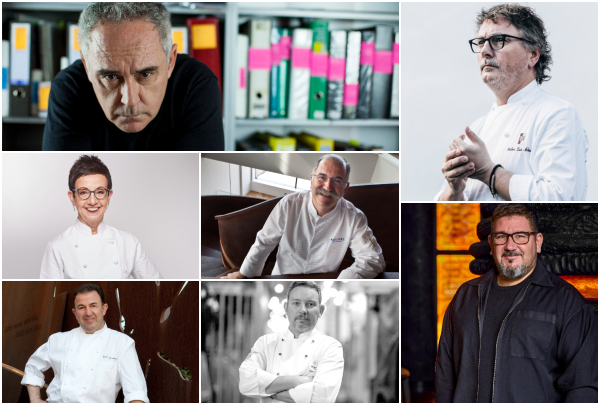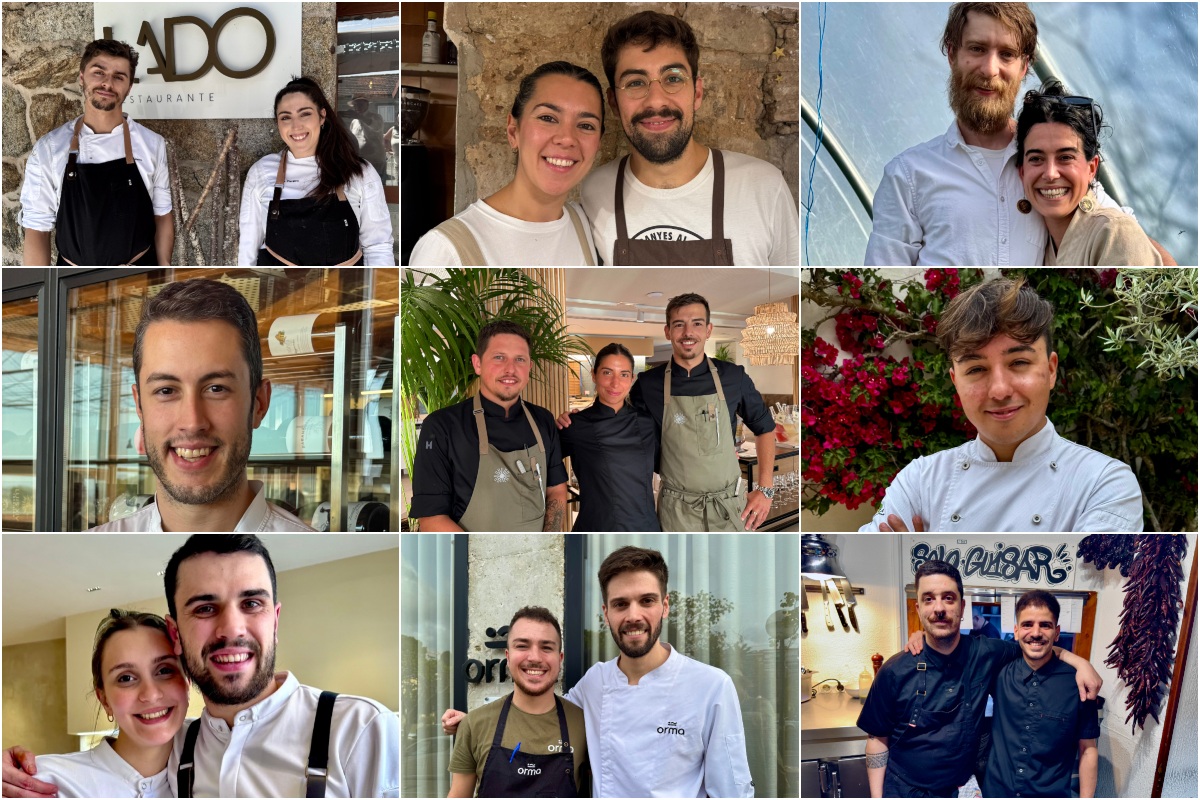News
30 years since Spanish cuisine stunned the world

The next gastronomic summit, to be held from 27 to 29 January, will dedicate its main event to the movement that reignited world cuisine. Its influence on contemporary gastronomy and the impact its legacy continues to have today.
Thirty years ago, Spanish cuisine took the world by storm, and in its 23rd edition, Madrid Fusión Alimentos de España 2025 aims to analyse the reasons and motives behind the revolution that swept the planet from 1995 onwards, making Spain the gastronomic epicentre of the world. For this reason, the most important gastronomic summit in the world, which will take place on 27, 28 and 29 January in pavilions 14.0 and 14.1 at Ifema, will be held under the motto "Revolutionaries". Creative freedom, the desire for change, rebelliousness, the courage to change the rules and generosity in sharing advances and discoveries are some of the innovations that these revolutionaries introduced into avant-garde cuisine and that will be recalled during Madrid Fusión Alimentos de España by its main protagonists and many others who have continued to be part of the movement or who are now carrying on the banner.
It will be much more than a tribute to the chefs who, at the end of the 20th century and the beginning of the 21st, changed the course of world cuisine. It is a creative movement that is still being embraced by many young chefs and recognised internationally. Spanish cuisine underwent a real transformation, led by chefs such as Ferran Adrià and his brother Albert, Juan Mari Arzak, Pedro Subijana, Andoni Luis Aduriz, Dani García, Quique Dacosta, Joan Roca, Carme Ruscalleda and Martín Berasategui.
It changed the way we think and work
This was the most influential movement in the world of gastronomy since Nouvelle Cuisine, and it has had an impact on the way chefs think and work on all five continents. This catharsis in the kitchen changed the mental structure of the chef when cooking and of the diner when tasting, through the advent of the tasting menu. Knowledge began to be shared, chefs stopped being dogmatic and a new way of understanding cooking as a language was shown to the world. Kitchens were created that changed the paradigm of work, workshops and laboratories where people worked in teams. And new tools or applications appeared: mixers, siphons, silicone moulds, gastrovac, rotaval, freeze dryers, ronner, paco jet, etc.
The enormous creative capacity led to the creation of non-existent styles: minimalism, deconstruction, the symbiosis of the sweet world with the savoury world… And new techniques and elaborations: ice-creams and savoury sorbets, new soups, sauces, gelatines, ice powders, airs, foams, clouds, bubbles, cooking with liquid nitrogen, distillates, spherification, obulato techniques, instant smoked foods, blown sugar, edible paper, sea sausages, new salted meats, new fermentations, etc.
This revolution also left a legacy of interdisciplinary relationships. Chefs began to collaborate with tableware designers, opened up to dialogue with science, art or top-level education, and even "conquered" Harvard with the appointment of the first chef in history, Ferran Adrià, as Doctor honoris causa.
Dialogue with Japan and Latin America
Cultural exchanges with other continents gave way to a dialogue with Japanese and Latin American gastronomy. And the product began to be seen in a different light, given equal value regardless of its price, and the search for the purity of the product's gene began.
New processed and unprocessed products appeared, as well as others that had not been used in haute cuisine before. Chefs began to look for contrasts in temperature and texture, to separate the concept of the main course from the garnish, to create new cocktails from food techniques and to create new alcoholic and non-alcoholic drinks.
The structure of the menu was also changed by this revolution. The tasting menu that we know today, long and narrow with several passes, was created and new concepts appeared in the gastronomic experience: creative cocktails, new snack tappas, pre-desserts…
The revolution in the dining room
The revolution that began 30 years ago also reached the dining room, eliminating rigidity with the appearance of informality in service and creating a new vision of "cooking in the dining room". The experience of the customer also changed, from a passive actor to an active one who goes to the restaurant to enjoy himself, incorporating provocation, humour and irony into the experience. This new way of understanding cuisine also introduced the sensuality associated with eating certain dishes with one's hands, something unfamiliar to haute cuisine. In most of these restaurants, the menu, bread and cheese trolleys disappeared from the menu. And finger food, the tendency to eat large dishes in small portions, became common in haute cuisine.
These wonderful years also led to Spanish chefs becoming celebrities, recognised by the major international media. Ferran Adrià appeared on the cover of the New York Times (2003) and then on the cover of the Le Monde supplement (2004). His work began to transcend gastronomic publications.Three decades later, the impact of this revolution on Spanish cuisine and the rest of the world is enormous. In these 30 years, the recognition of gastronomic excellence in Spain has multiplied: from three restaurants with three Michelin stars in 1994, the number has risen to sixteen in 2024. New steakhouses have appeared that are considered to be the best in the world, signature seafood restaurants and an infinite number of gastronomic restaurants. And a flurry of first places in all the world rankings, starting with The World's 50 Best Restaurants, where Spanish restaurants have been at the top for 20 years. This revolution in Spanish cuisine has not only changed the way we understand gastronomy, but has also had a significant economic and cultural impact. Spanish cuisine became a tourist attraction, and cities such as Barcelona, Madrid, San Sebastian and Girona began to be recognised as top gastronomic destinations.


